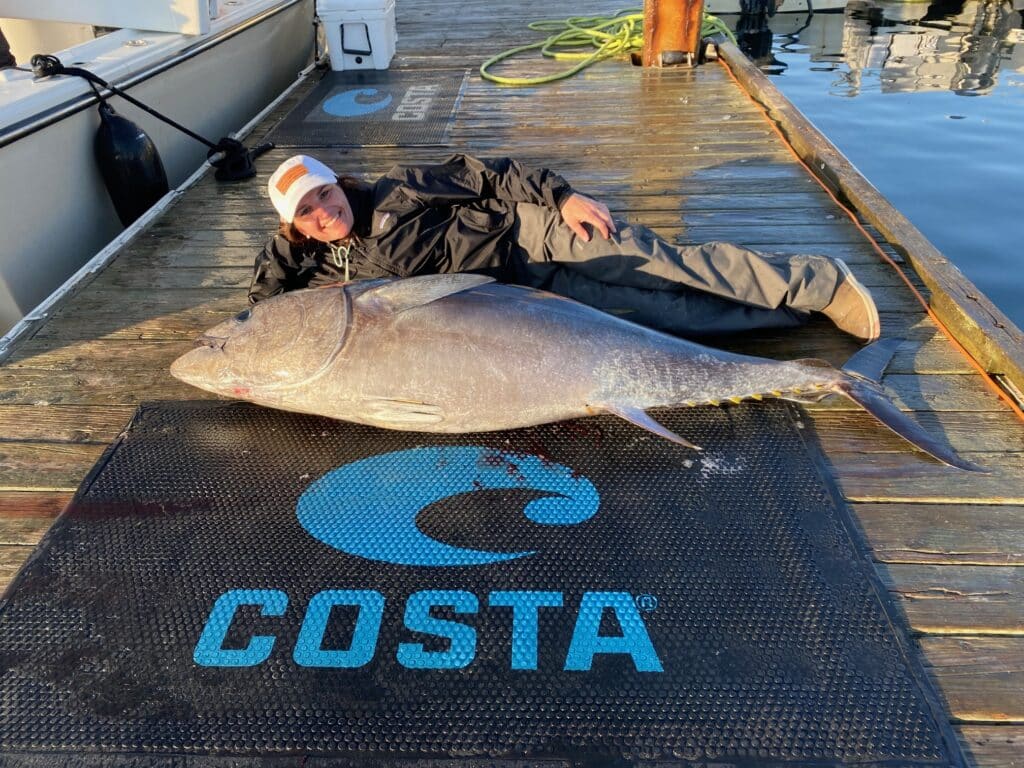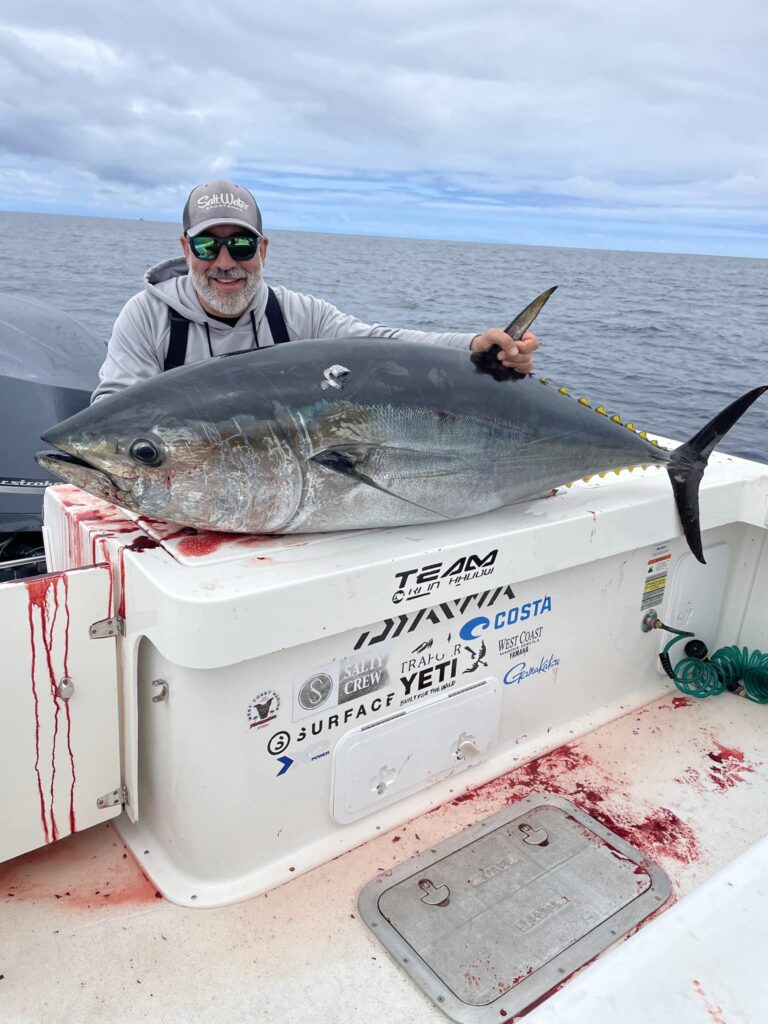
SoCal might be best known for phenomenal weather, longboards, and great music but I think fishing should top that list. San Diego is home to a diverse fishery both near- and offshore, with a wide variety of species calling the inshore wrecks, reefs, and kelp paddies home. Further out, you’ll encounter pelagic species such as swordfish, striped marlin, and many members of the tuna family.
I was invited to San Diego by our friends at Costa to sample the excellent fisheries and test out their latest offering, the King Tide. On the first day of our trip we hit the inshore grounds on one of SoCal’s most famous head boats. We ventured further out on the second, taking 25-foot Parker some 50 miles out in pursuit of Pacific bluefin. The trip gave us the opportunity to test out Costa’s newest offering, which builds on the company’s 40 years of sunglass experience with a host of new features.
Inshore Bounty
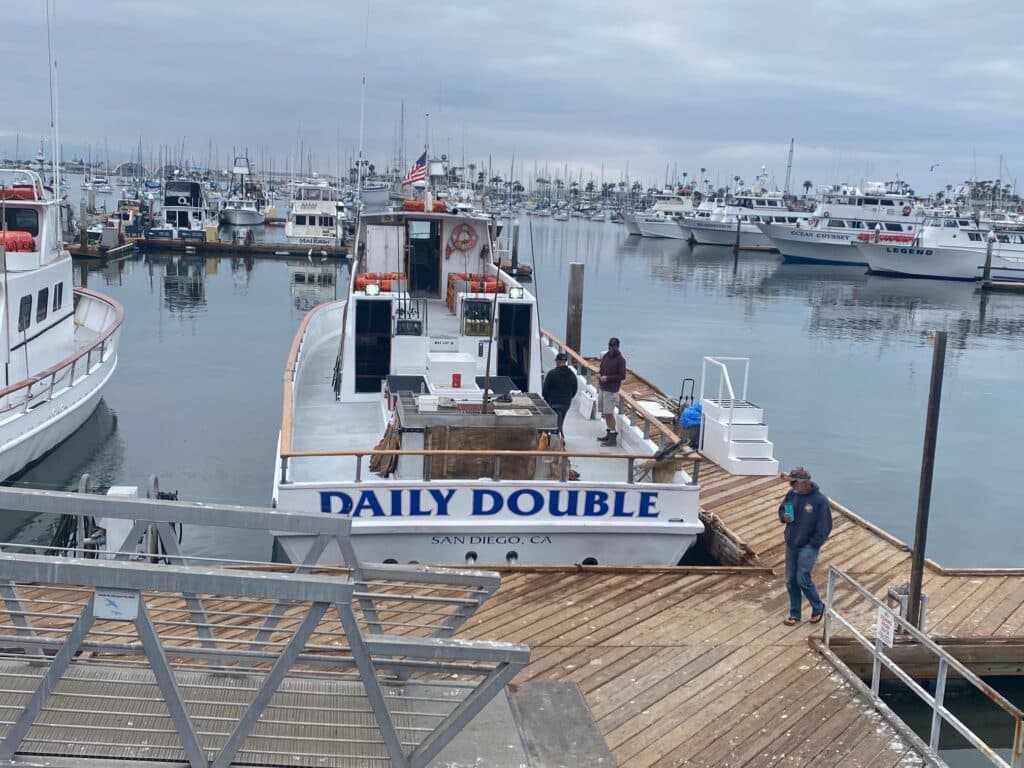
San Diego is home to a thriving head boat culture, and the heart of that scene may just be located at the Point Loma Sportfishing center. This marina is home to well-stocked tackle shops, tackle rentals for visiting anglers, and over a dozen head and charter boats. Referred to locally as “sporties,” these boats take fares out on half-day, full-day, and long-range trips that can be at sea for a week or more. A devoted group of anglers take advantage of this fleet, and the fertile waters they frequent.
The Daily Double is one of the oldest boats in the San Diego fleet, built 65 feet long with a 20-foot beam to comfortably fish the wrecks, reefs, and kelp paddies off the SoCal coast. At the helm was Capt. Fred Huber, who has been plying the area waters for decades. On the Costa trip, Huber took us to a few inshore pieces before hitting a productive patch of kelp on the way in. Rockfish, calico bass, sand bass, and sculpins would be our targets for the day, and they proved to be abundant.
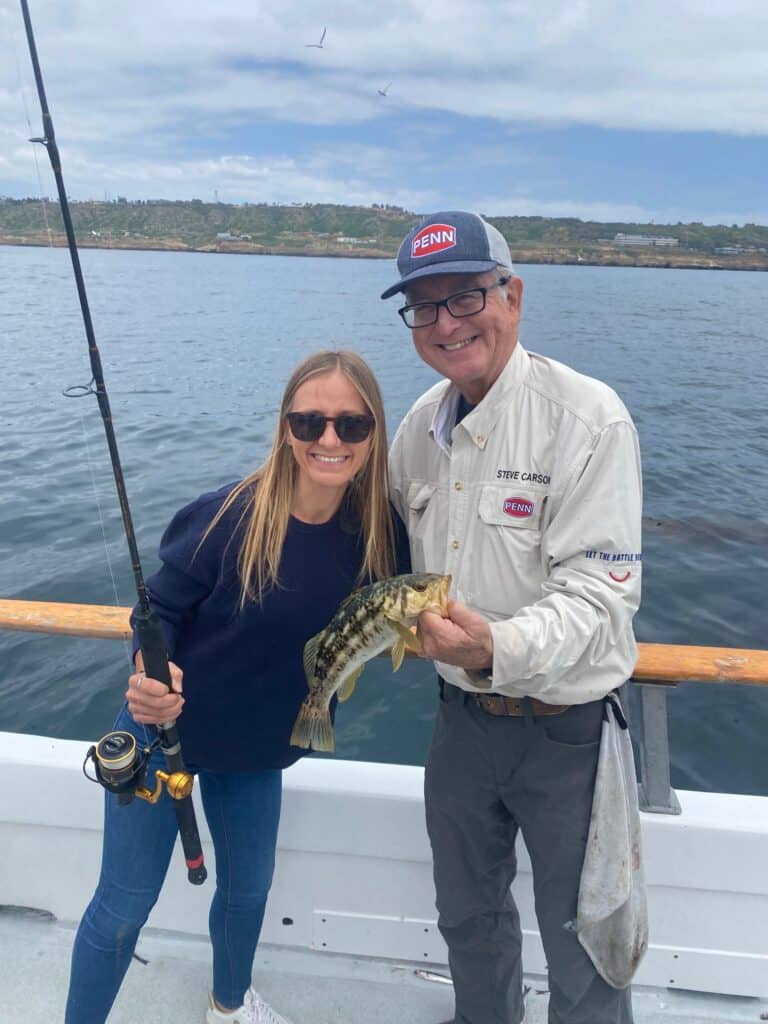
Fishing strategy was of the “keep it simple” variety, utilizing three-way rigs baited with live sardines or anchovies, as both were available at the local bait pens. Once in place, the boat dropped the hook to keep us in position over the most productive stretches of structure. The mates set out hurling handfuls of bait overboard, which would kick start the action. After a few minutes of chumming, the waters came alive. Rods bent as calicos and sand bass aplenty came up to the rails, though almost all were released as we had other dinner plans. Fishing was so hot at points that bait was swapped for jigs and still the rods stayed tight.
Beyond the excellent fishing, SoCal’s sport boats typically offer high-quality cuisine. As we hung out in the parking lot waiting for the boat to depart, a gentleman came up to me show me pictures of both the yellowtail he caught on a recent trip, but also the dinners he was served while underway. The breakfast burrito I ate aboard the Daily Double was as good as I’ve ever had anywhere, and the burger I had for lunch rivals anything you’ll find in a top-tier diner around here. It’s said that you can tell how long a mate has worked on the sporties by the pounds they have packed on. Be sure to bring your appetite.
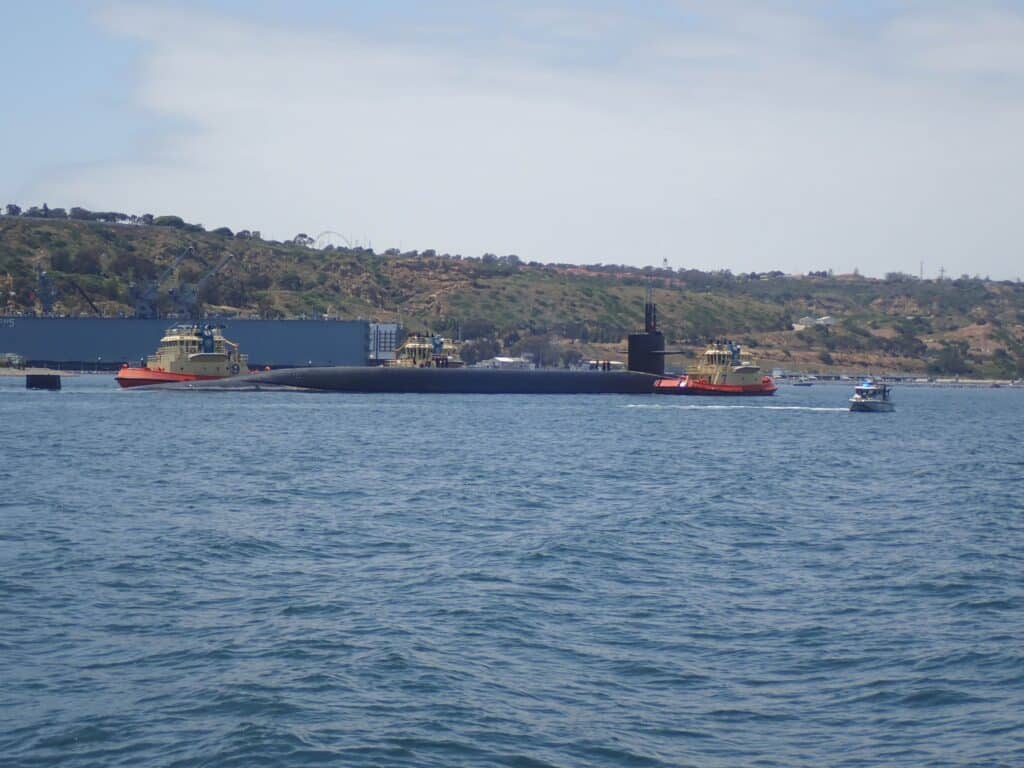
Another unique aspect of fishing out of San Diego are the military vessels you’ll encounter while going to and from port. Naval Base San Diego serves as the homeport to much of the Pacific fleet, and is the second largest surface ship base of the United States Navy housing over 50 vessels at any given time. During my last trip to San Diego several years ago, we saw the USS Ronald Reagan, a Nimitz-class nuclear-powered aircraft carrier returning to base. On this trip, we passed an Ohio-class nuclear submarine heading out to parts unknown. Though the Daily Double is fairly large, it shrinks when passing a vessel of that size.
Kite Fishing for Bluefin
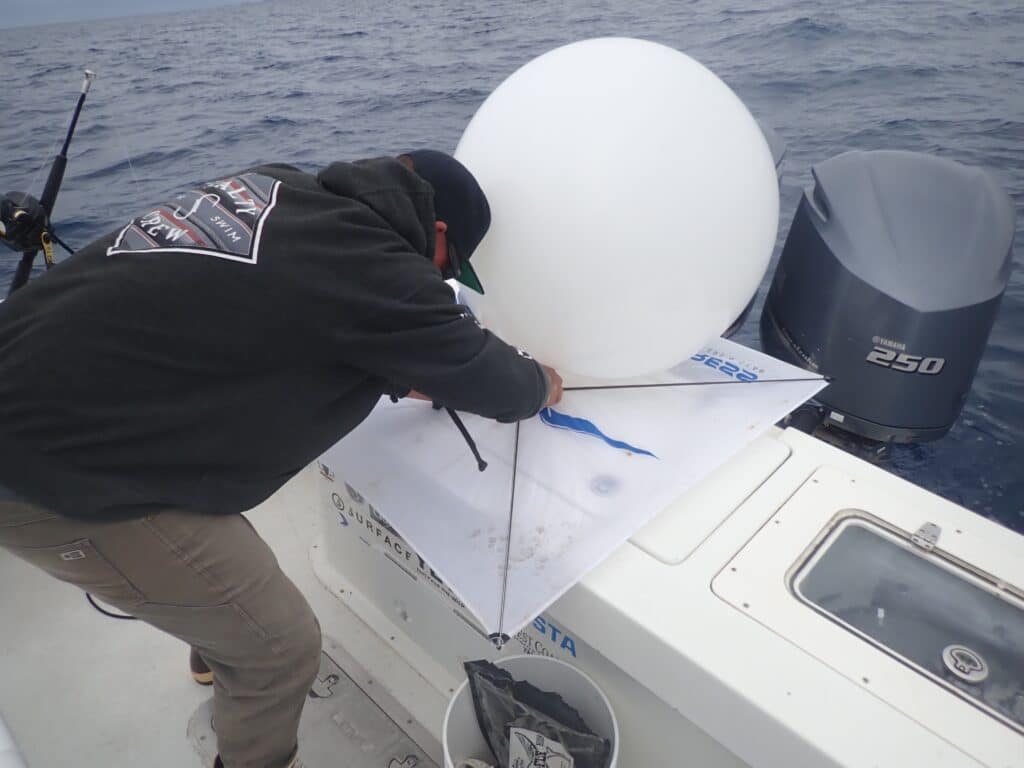
There’s more than a little debate surrounding the origins of kite fishing, with a few regions declaring the technique as their own. Whether or not it originated in SoCal, the captains around here have it pretty dialed in. On the second day of our Costa adventure, we took to the seas in one of the boats in the Pinnacle Sportfishing fleet for some epic kite action, West Coast style.
The Parker we fished off was piloted by Capt. Cameron Bingham. If there ever was someone that figured out what they should do with their life, it’s Bingham, and that purpose is catching big bluefins. His enthusiasm was infectious, and kept everyone stoked the entire steam out to the fishing grounds. Two hours clicked away in the blink of an eye listening to Bingham’s stories, his soft SoCal inflection sometimes jumping octaves with pure excitement about past bites.
The value of kites, Bingham explained, was their ability to present baits quietly behind the boats. The baits could be kept 200 yards or greater away from the vessel, limiting exposure to the fish-spooking outline. And suspending them from above meant that the terminal tackle was all hidden from the supersized eyeballs of the bluefin, helping ease their minds about the easy meal being served up.
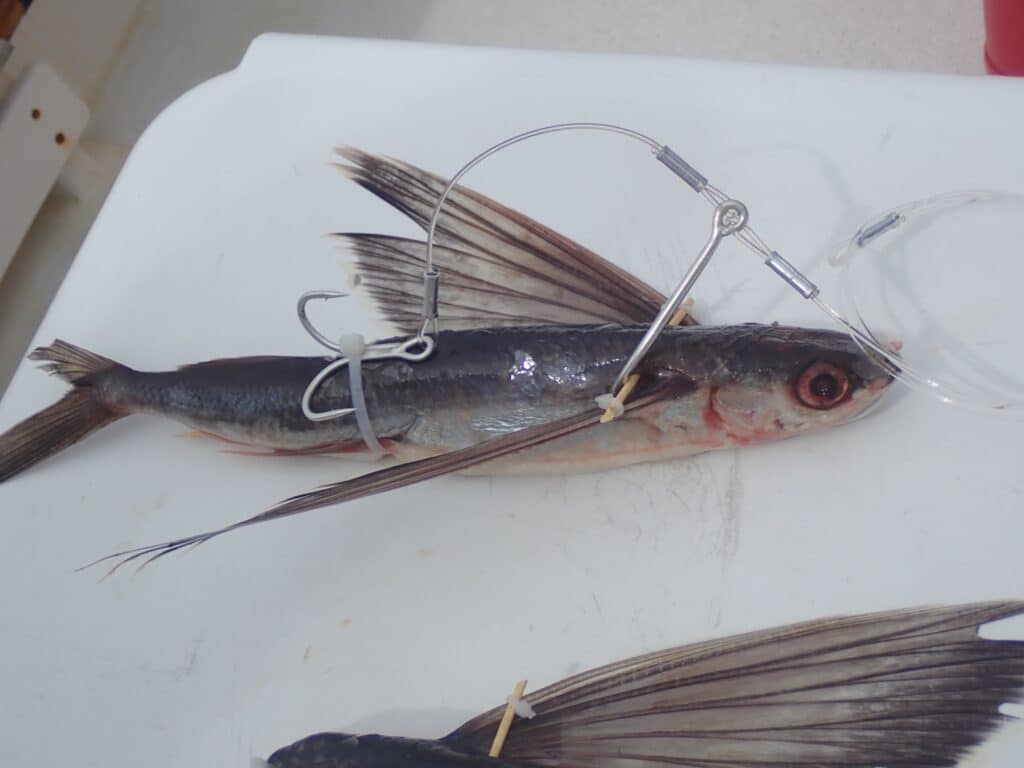
As soon as we hit the tuna grounds, Bingham set to work rigging up a pair of flying fish to dangle below the kite. Having an extra bait at the ready would ensure we could get back in the action quickly if we got bit and there were other tuna around. Winds that day were under 10 knots, which made for flat seas but less than ideal kite fishing conditions. Bingham said that winds between 10 to 20 knots made keeping the baits aloft easy, but there were workarounds.
Stashed in the cabin were a brace of helium tanks that were used to inflate balloons that would be affixed to the kite; one to the cross arms and another further down the line. Aided by the two helium-filled balloons, the kite would have no trouble keeping the flying fish on the water’s surface. A line attached to a Penn International 50 Wide was run through a snap swivel on the kite’s line, affixed to the flying fish, and ferried out behind the boat.
Once we were in a likely spot with the kite deployed, Bingham climbed up to the upper station and scanned the water with a big pair of stabilized binoculars looking for signs of life. Once he found some surface-feeding tuna, known as a “foamer” in Left Coast vernacular, he hit the throttles and we made our way over at 10-knots, using the kite’s scope to present baits well away from the din of the motors.
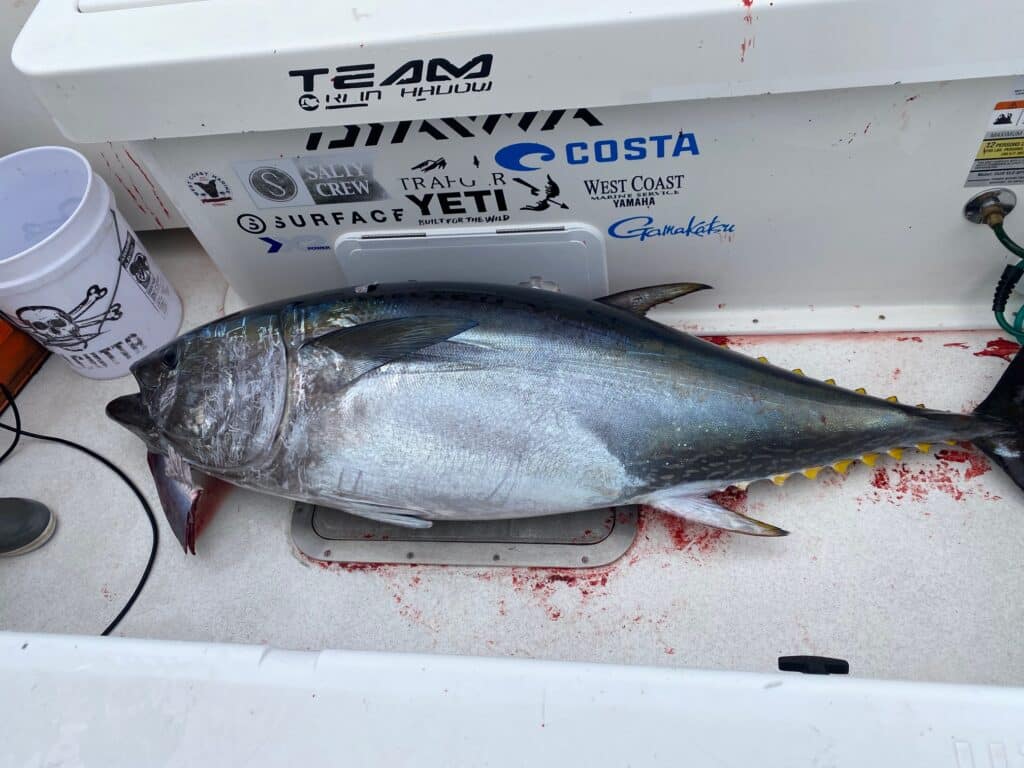
Once the bait was in place over a feeding school, Bingham yarded on the line to add even more life to the hovering fish. It proved too much for a healthy bluefin of about 160 pounds to take, and it smashed the bait with a reckless abandon. In that moment, I knew what Bingham was talking about on the ride out. It was all but impossible to not high five the other anglers on board as the rod doubled. About 15 minutes later, we had deep color. Some final theatrics took place at the rail and the gaff found its way home.
We were able to repeat this scenario with another tuna, a 150-pound specimen, later in the trip. The take may have been even more impressive, as the fish made several swipes before finding the hook. Anticipation was high as the flying fish hung in shreds below the kite, but the tuna eventually engulfed it and the fight was on.
After returning to port, our bluefin were taken to a processor for the trip home. Fast and Easy Mobile Fish Processing made quick work of our bounty, working out of the back of a box truck. We loaded coolers for our plane ride home the next morning, and enjoyed some sushi in the hotel before calling it a day. The whole thing had a very SoCal feel about it.
Tuna fishing is always fun, but adding a kite in takes it to the next level. If you ever get an invite, take it. Especially if it comes from somewhere around Point Loma.
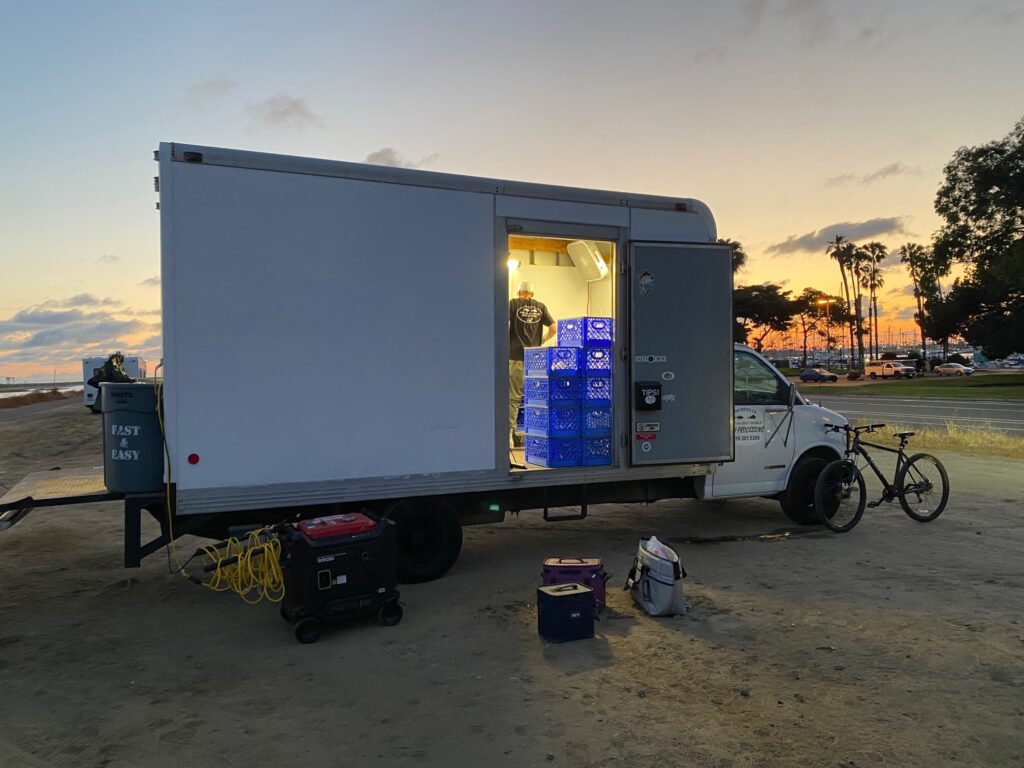
Californication
Costa choose Southern California to introduce the new King Tide sunglasses because they were partly influenced by area’s culture. Most of Costa’s performance sunglasses feature what is known as an 8-base curve, which tightly hugs the face to keep stray light out. But Cali is the home of flat bills and fashion-forward eyewear. Costa wanted to develop a pair of sunglasses that would live up to their 40 years of heritage as while fitting in with the cool kids that call SoCal home.
To give them a look that would be appreciated by the fashionistas among us while still delivering the on-water performance that makes them so popular with anglers, Costa developed removable side shields. This allows Costa to produce the King Tides in both the familiar 8-base curve as well as a flatter 6-base curve as you might find in a pair of Wayfarers or other sunglasses designed for looks instead of performance. The removable side shields block light from sneaking in from the peripherals even on the flat frames, preventing squinting and letting you spot fish even on the brightest days.
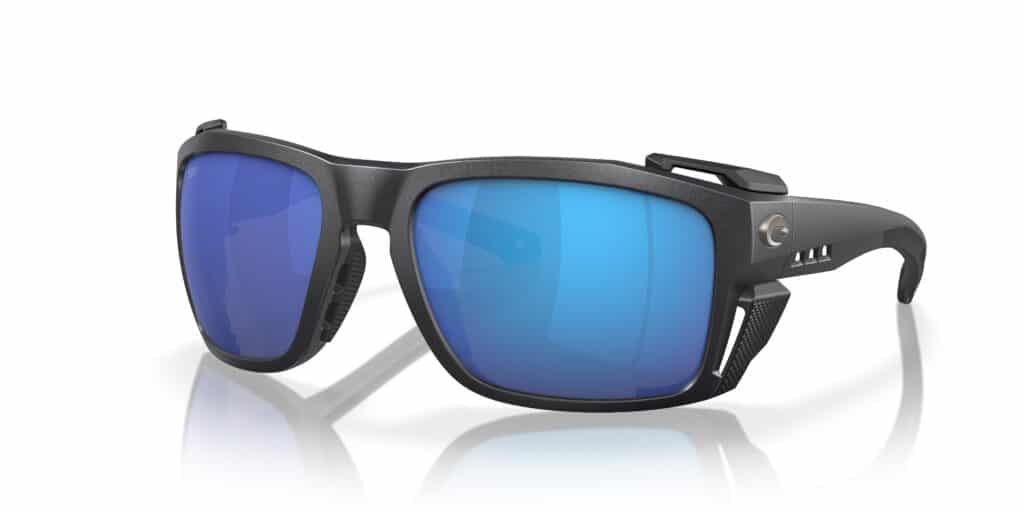
The full coverage afforded by the side shields also helps block wind, an important consideration with the rise of the fast offshore center console. Duane Diego, proprietor of Pinnacle Sportfishing and Costa ambassador says the King Tides help make long runs more comfortable. I certainly noticed the wind-blocking properties while out in the water.
And, you can easily take the side shields off and stuff them in the case when not in use. Though I don’t care much about fashion, I find myself swapping the Reeftons or Blackfins I typically wear on the water for a pair of Santiagos or other lifestyle frames once I get back to my truck. With the King Tide, you can just remove the sides if you decide you want less coverage. And the tops of the glasses are rubberized, which will keep them from sliding off the console when you throttle down.
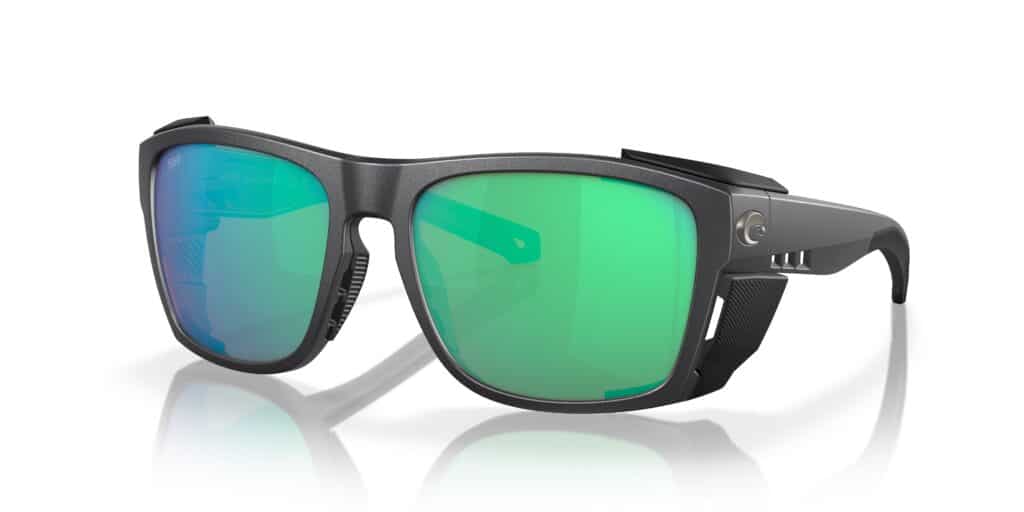
Another notable feature on the King Tides is the shark-inspired sweat channels built into the temples. These innovative grooves serve to funnel sweat from around your eyes down to the end of the stems, exiting the bottom through a small notch. To perfect this technology, Costa’s engineers developed “Sweaty Eddy,” an artificial head that secretes sweat like a linebacker at an NFL training camp in south Florida in the middle of July. This allowed them to see how the new sweat-management technologies worked in real-time, allowing them to fine-tune the system and all but eliminate fogging.
On Friday, July 7 the King Tide 6 and King Tide 8 will be available in black frames with 580G blue mirror lenses at select retailers. Suggested retail pricing starts at $329. By September 15, 2023 you can expect to find them on costasunglasses.com and their retail partners worldwide.
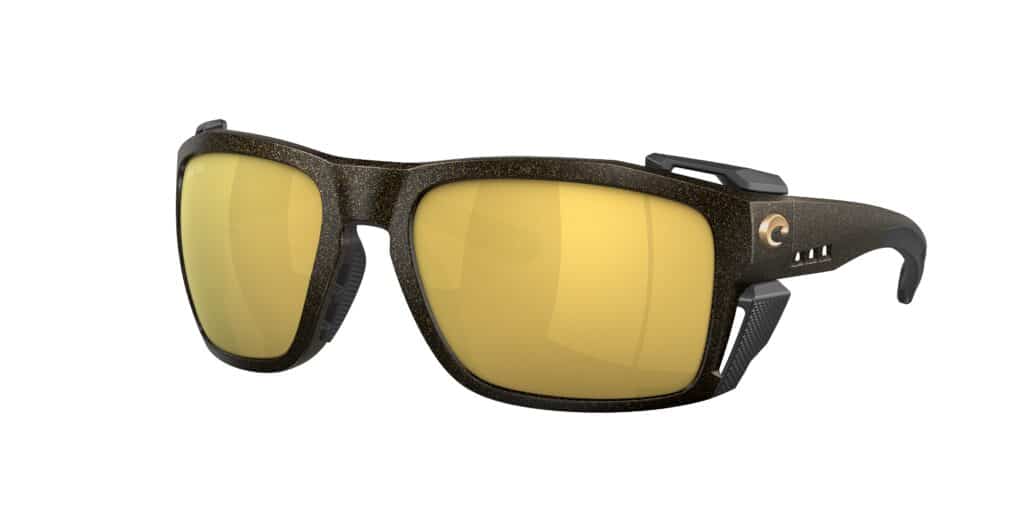
If you want a piece of history, you can grab one of the limited-edition King Tide 6 and King Tide 8 models starting on Tuesday July 11. These models feature a black gold frame and never before seen 580G gold lenses. Costa is only releasing 40 of the 6 and the 8, so act fast if you want to get your hands on a pair.
